A Wondrous Return – Houston Arboretum & Nature Center’s Leadership Toward a Resilient Future
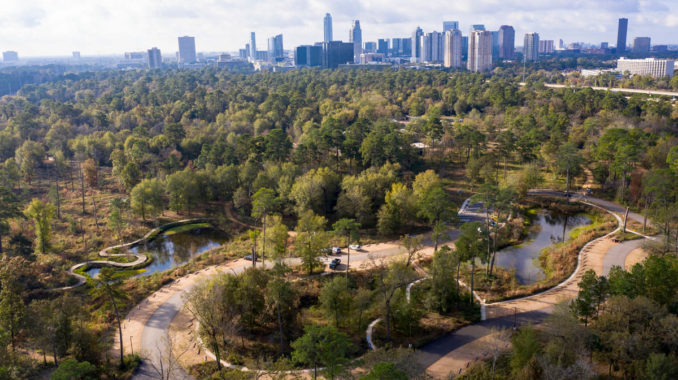
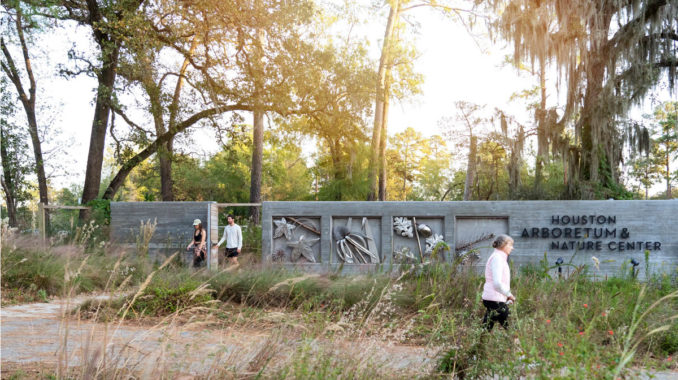
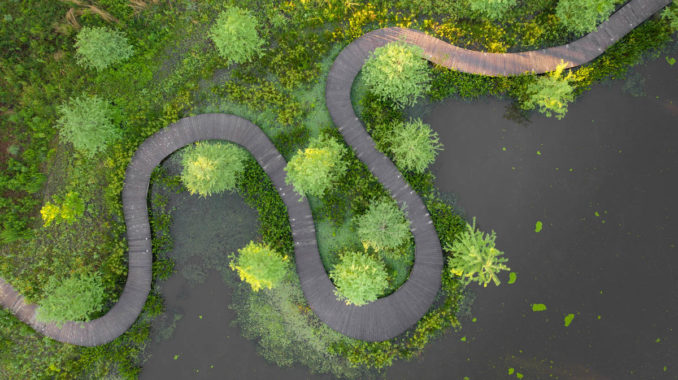
The Houston Arboretum and Nature Center offers an escape from urban life and serves as an educational resource. Founded in 1967, the Arboretum is bordered by transit infrastructure and the Buffalo Bayou. The landscape had evolved into an overgrown woodland, overrun by invasive species and early successional trees. The canopy shaded out the understory, leaving a lifeless duff layer. By 2012, when the team began the planning and design process, the Arboretum had lost over 50% of its tree canopy.
The site lies at the convergence of regional ecosystems: piney woods, coastal prairies, and post oak savannas. Fires and buffalo grazing historically maintained open prairies and savannas. Without these natural disturbances, the site became overly wooded. To restore ecosystem diversity and function, the design team proposed returning to grasslands rather than reforesting. Prairie and savanna ecosystems proved to be more resilient and provide greater ecosystem services and educational opportunities. The design also established a robust, balanced landscape of wetlands, wooded ravines, and riparian corridors endemic to southeast Texas.
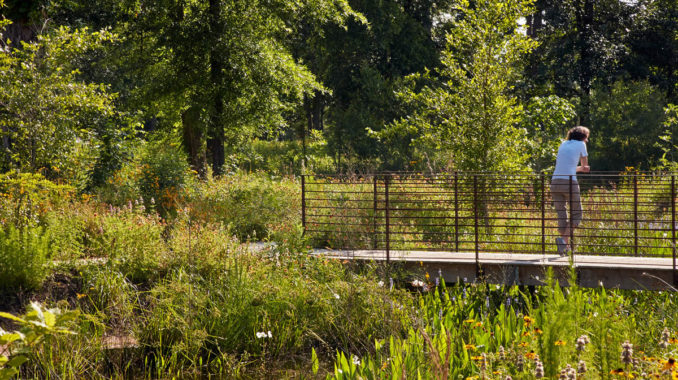
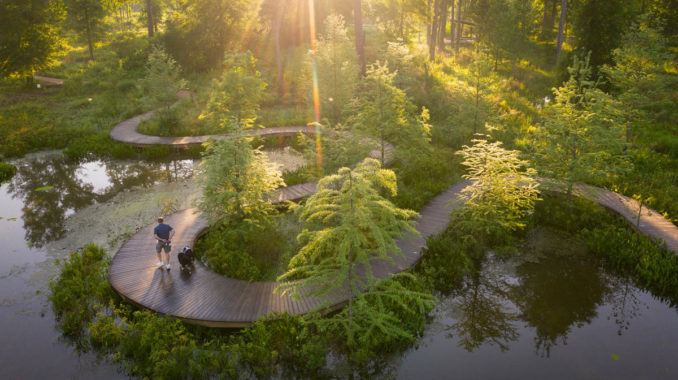
Charrettes with local experts and regulators addressed restoration goals, including management techniques, tree removal logistics, and native plant supplies. To explain the tree removal process to the City and public, restoration pilots were established in the savanna and woodland. The pilots tested soil treatments and seed/plug techniques and served as an educational tool. Input from scientists and community members alike played a pivotal role in the Arboretum’s successful restoration and transformation. The staff and design team engaged constituencies, shifting perceptions of natural beauty through dialogue.
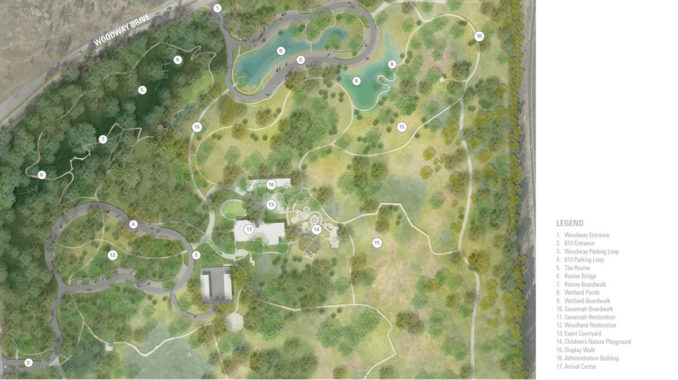
New ecosystems drastically increase biodiversity at the Arboretum. A two-acre wetland serves many functions including detention, irrigation re-use, and an insect, amphibian, and bird habitat. Seven acres of woodland were restored and enhanced with new tree diversity and an herbaceous understory.
The ravine, a tributary to the Buffalo Bayou, is characterized by undulating topography. Community engagement indicated the ravine is the Arboretum’s most cherished destination. However, floods consistently destroyed trails and left bridge passages impassable. The team reset the natural landscape, balancing built landscape and natural change. New bridges at higher elevations were designed to handle flood inundation and flow velocity while a boardwalk trail system gives guests access to the lowest areas of the ravine.
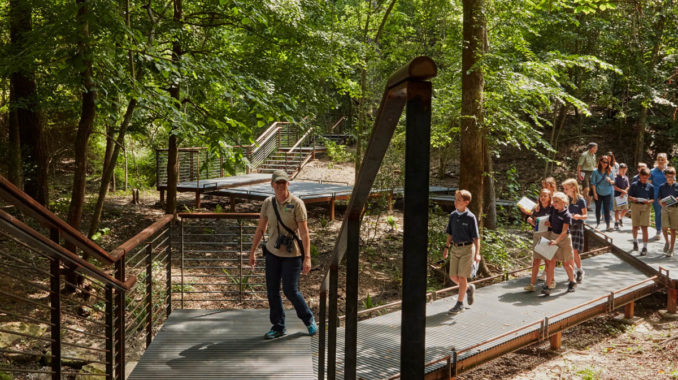
A long-term monitoring program was established in 2015 to monitor vegetation changes. Data shows invasive species have decreased, tree diversity has increased, and pollinator presence has doubled. The savanna provides habitats for new species of birds that had never been recorded on site. Mowing, manual removal, and selective herbicide control invasive species. In 2020, goats were used to mimic large grazers, helping control invasive species and adding nutrients to the soil.
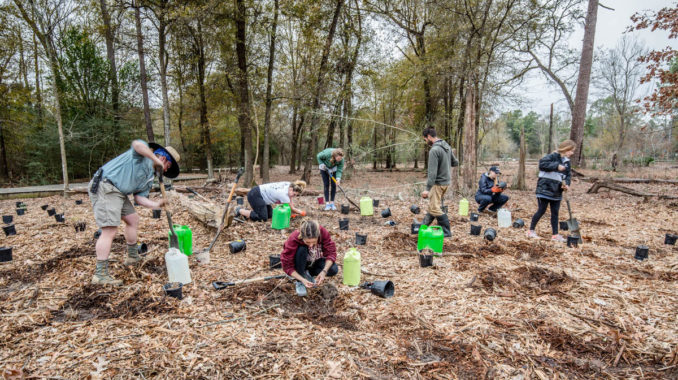
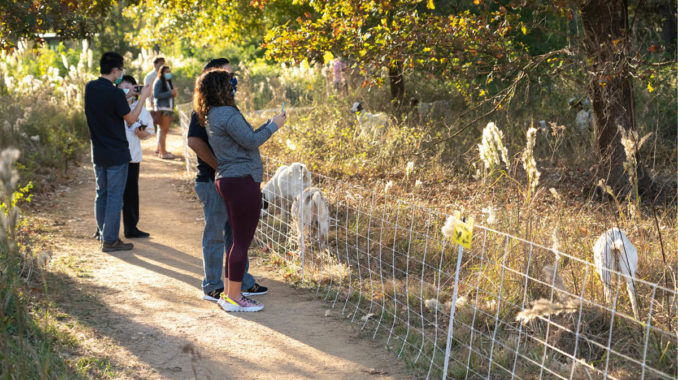
The Arboretum has transformed into a place of learning, wildlife habitat, human respite, and place of gathering for all. Guests traverse boardwalks and trails that guide them through the restored mosaic of site ecologies and educational stopping nodes. Yearly Arboretum visitors grew from 169,815 guests in 2016 to 652,346 in 2020, post implementation.
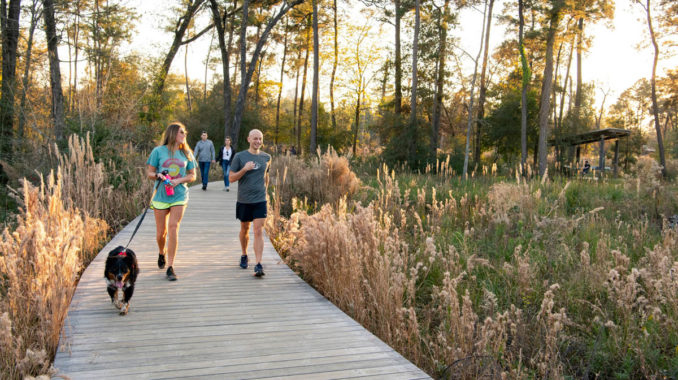
Project Credits:
Design Workshop, Inc.; Reed Hilderbrand; Ladybird Johnson Wildflower Center; Walter P. Moore; Frayre Engineering & Consulting, PLLC; ETM Associates, LLC; Dr. Todd Watson; Lake | Flato; Leslie K Elkins Architecture; Kendall Heaton Associates, Inc.; HydroGeo Designs, LLC; Jeffrey L. Bruce & Company, LLC; E&C Engineers & Consultants, Inc.; Forney Construction; Garza Development
Image Credits:
Brandon Huttenlocher/Design Workshop; Design Workshop; Charles Mayer/Reed Hilderbrand; Reed Hilderbrand; Houston Arboretum & Nature Center
